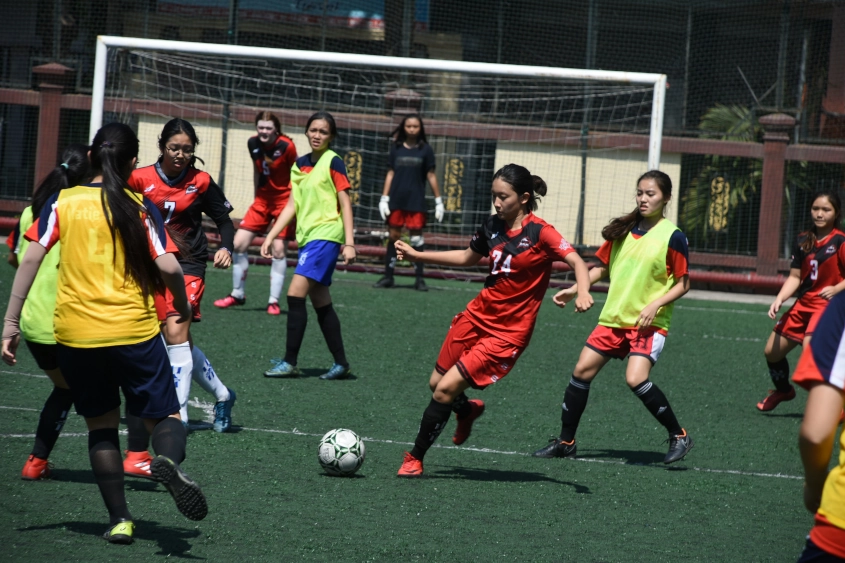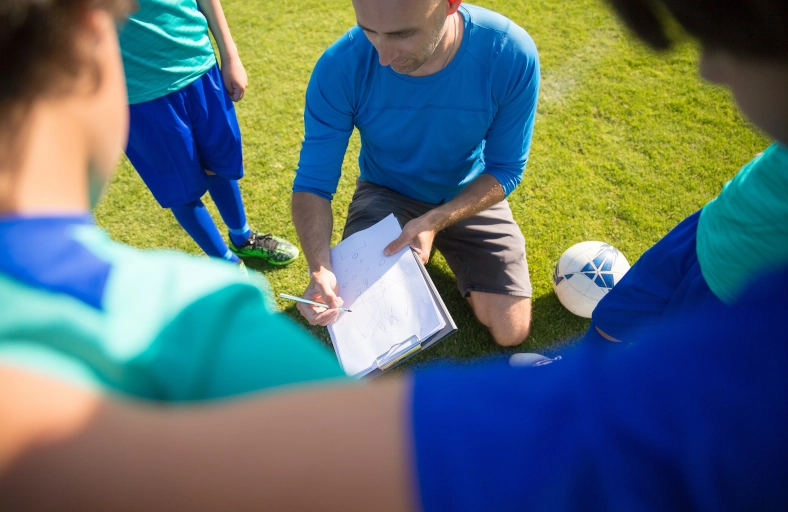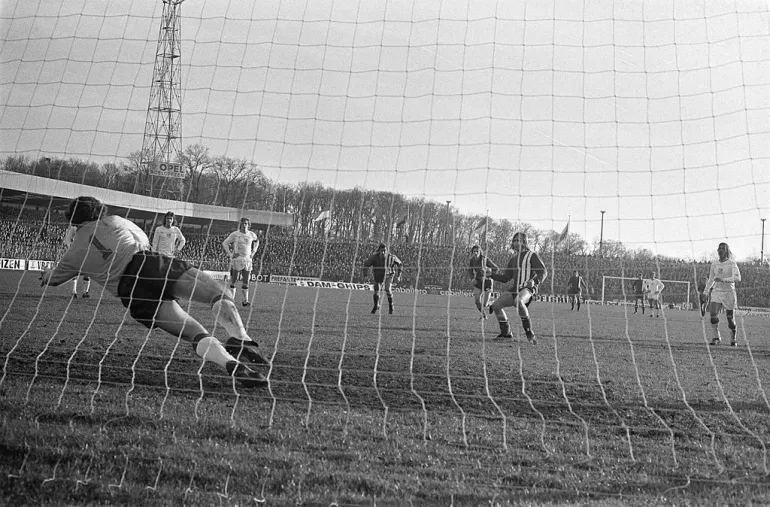How to form a football team with your friends and be competitive

Only a few chosen manage to get through the ranks of a football academy, football club or college football. Even fewer, get to become professional. The rest of us mortals still play the beautiful game but between friends or in amateur leagues. The issue is how to transition from playing with friends to playing in an competitive amateur league successfully. In this post you will learn how to form a football team to be competitive and have fun.
The decision
Many of us have been there. We love football. We play the game any time we have the opportunity. However, for one reason or the other we never made it to a professional or semi-professional level. One day, one of our kick around friends suggests “why don’t we join a league”. Next comes choosing a name for the team, inviting friends to join the team, buying a kit for the team, collecting the fee, etc. And that’s how everything starts…
However, often reality strikes early in the competition. You start losing games. You realize that you and your mates weren’t as good as you thought. Everything starts to fall apart. You have heated discussions with everyone and anything under the sun: the opposition players, your teammates, the referee (if you are lucky to have one), your wife, you dog… Your weekends become a horrendous experience. And many, finally quit the team.
Adding to the mix are injuries. The older you are, the longer you take to recover. Torn muscles are a common occurrence. And finally, you stop playing all together.
It does not need to be like this. The following tips should help you building a competitive team that you enjoy playing for.
Make an honest assessment of your skills
Often newcomers to the amateur competitions scene underestimate how competitive these leagues can be. I made this mistake a few times with catastrophic results.
It is fine to lose, even if you do it often. A different thing is to lose every game, and worst, to be trashed most of your games. So, you need to make an honest assessment of what type of competitions you should register your team. Options vary depending on you country and the city you live. Some places have FIFA accredited leagues with divisions for all skills, ages and sex. There are also inter-company leagues, tournaments run by private organisations, competitions run by football clubs, etc.
Before registering your team in a competition, watch a game and study your potential competitors. Are they at the same level that your team? Are they way better than your team? Don’t assume that with a bit of training your team can compete with teams that are better than yours. Training helps but it is not a silver bullet.
Choose players wisely
Choosing the right players is the hardest part. Everyone wants to play, but let’s be honest, not everyone can play. You will need to make tough decisions and have difficult conversations with your friends.
Every team needs to have clear roles. Everyone wants to score goals (even goalkeepers), but you can’t play with eleven strikers. You need to have a balanced team. It is not very difficult, to start you need good players that cover 4 main positions: goalkeeper, defender, midfielder and striker. You fill the other seven positions with whoever you can. But you must have those 4 positions covered.
When you choose players, do not improvise positions. If a player played all their life as striker, don’t ask them to be a center back. So, if you have too many players in one position, you may need to turn down some of them. Changing roles is fine in formative years, but as an adult is harder to learn a new position. Besides, we are talking of amateur teams, you won’t train as many hours as the professionals do. You won’t be able to train a player into a new position that easily.
Don’t underestimate the importance of a good goalkeeper. You can have the best defenders in the world, but if you have an improvised goalkeeper you will suffer the whole tournament. Goalkeepers can actually win games. Sometimes the opposition may shoot more at goal than you but your goalie stops every shot, then in a counterattack you score. That is the beauty of football. Besides, finding players for all other positions is relatively easier than finding goalkeepers.
Decide how many players you need in your squad
You also need to decide the number of players you will register in the competition. This will depend on the level, age group and the regulations of the league you play. Professional teams have 20+ players. For the last FIFA World Cup, a maximum of 23 players per team were allowed.
If the age of your team is under 30, you may not need 20+ players. Registering 14 to 16 players will give you enough subs for the season. It also makes it easier to manage, and you won’t have to face many difficult discussions. However, this will depend on how physical and competitive is the tournament. If the competition is very demanding, you may need more players as there will be more injuries. Still, do not register more than 20 players.
If you play in a masters or over 35s league, you will need more players. The older you get, the more injuries you will have. After 30, people have more personal commitments too, usually family and work. I am in my 40s, and in the last year approximately 30 different players played for our team. I don’t recommend you to register 30 players at the beginning of the season. But you will definitely need at least 20 regular players, and keep a list of occasional players that you may need in the future.
If you can’t achieved these numbers, then you will need to reassess if 11aside is the right format for your group of friends. Maybe 7aside or even futsal are better options for you.
Choose a manager or coach
Not only the positions need to be clear, who is in charge of deciding the starting 11 and the style of football you play needs to be agreed by everyone. Don’t attempt a “democratic” style of organisation, it does not work.
You need one or two people making the final decisions. Designating the manager or coach must be done before you start registering players, collecting fees, etc. This decision must be agreed by everyone. These people will be in charge of having difficult conversations, turning down players or telling others to be subs.
Your decision makers can be players, but at game time you want them to be off the field to make substitutions or tactic changes as you play. If possible, choose someone that is not playing as the coach.
Choose a style that is simple and suits your players
Remember, we are talking of amateur teams. Do not overcomplicate your game. Keep it simple. Choose a formation based on the players you have and stick to it.
Attempting all sort of tactics and formations only works for semi-professional and professional teams. These teams train 3 or more times a week for half a day or more each session. Amateur teams are lucky if they even train. I recommend you train at least once a week though.
Therefore choose a formation and style that suits the physique and skills of your team. If most of your players are small, there is no point on playing long balls and crosses, play on the deck using a possession style of football. When you have tall players, the opposite style may work better. If you have many skillful strikers, use an attacking formation (e.g.: 4-3-3). On the other hand, when your defensive lineup is good but the rest of your team is average, you may want to become that ugliest team in the league that wins all games by the minimum difference. Use a defensive formation in this scenario (e.g.: 4-5-1).
Whatever style you decide to play, stick to it. Don’t feel tempted to change formations because you lost a game or you know the formation the opposition will use. Consistency is key. The more your players play in a certain way, the better they get. Movements and positions in the field become second nature. Remember, we are talking of amateur teams. Some of your players never trained in an academy or got far in them. You need to make it easy for everyone.
Play some friendlies
You need to know where your team stands before the season begins, preferably before you register your team in a competition. This will allow you to make small adjustments and try new players that joined the team. It will also give you a reality check on how well positioned you are for the division you chose to play. You may want to change divisions, competition or even format (instead of playing an 11 aside competition, you may want to change to 7 aside league).
Like in professional teams, use friendlies to try tactics and players. But once you find the formation that works for your team, stick to it for the rest of the season. As discussed before, you need to keep things simple.
Train
In order to be successful, you need to work for it. In football, like in any activity, there is no substitution for hard work. If you want to enjoy playing competitive football, you must train. You don’t need to follow a strict diet and boring individual exercises to tone your muscles. Training must be fun. Fitness, at amateur level, can be achieved with a ball at your feet instead of long running sessions or endless hours at the gym.
Don’t spend much time on drills that focus on individual skills. Use group drills that resemble real game scenarios. The main reason for this is that most amateur teams have limited time to train. So, you want to focus on how you work as a team. Additionally, you want training to be fun. Waiting in a long queue as part of individual drills is not fun, and in the middle of winter, especially at an older age, can cool down your muscles and result in injuries.
Have a look at our drills section to get some inspiration.
Final thoughts
How to form a football team involves many other aspects, but the tips above should get you going. Ultimately you want to have fun. Don’t take it too seriously, but have some level of organisation in place. Play with people that you feel comfortable and that you are happy to have a beer or two after a game. Life is short and we all have busy lives, you don’t want your football matches to become something you “have to do”, they should be something you “want to do”.
Subscribe!
Subscribe to our newsletter and receive emails with the latest tips and drills to improve your football skills.



